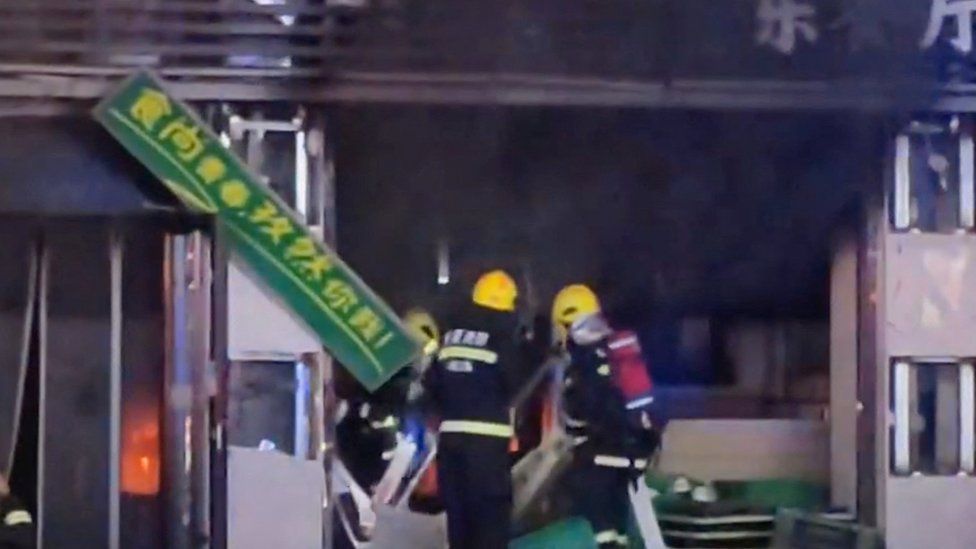US warns Thai navy over HTMS Sukhothai salvage
Reported involvement of Chinese partner with contractor recovering US-built ship a red flag
PUBLISHED : 20 Jan 2024 at 20:03

The United States has warned the Royal Thai Navy about the reported involvement of a Chinese company in a plan to salvage the US-built corvette HTMS Sukhothai.
The warning was contained in correspondence revealed by Chayaphon Satondee, a Move Forward Party MP for Bangkok who is a member of the House committee reviewing the 2024 budget bill.
According to Mr Chayaphon, the document from the Joint United States Military Advisory Group Thailand (Jusmagthai) said the navy had yet to respond to US concerns since the ship sank in the Gulf of Thailand on Dec 18, 2022. Twenty-four of the 106 crew onboard died and five others were missing and presumed dead.
Jusmag, which oversees US military affairs in Thailand, first contacted the navy a month after the Sukhothai sank, seeking information about plans to recover the ship that entered service in 1987. It never received a reply, and on Dec 1 last year it sent the follow-up letter quoted by Mr Chayaphon.
The second letter urged the navy to abide by its agreement with the US, following a report that it would select a Thai contractor that had teamed up with a Chinese partner to salvage the warship.
Mr Chayaphon said that in the case of a salvage operation involving a US-built ship, the navy has an obligation to seek US government approval of the contractor.
Jusmagthai, he said, warned the navy that failure to do so would constitute a violation of agreements that affect foreign military sales between Thailand and the US.
Adm Adung Phan-iam, the navy commander, said it is working out how to proceed.
“If the US takes part in the salvage operation, it may delay the operation from its original schedule set in April,” said a source who asked not to be identified.
The navy has found a bid winner that will salvage the warship with a budget of 199 million baht, pending approval.
2 men arrested in China officials impersonation and staged kidnap scams; 2 victims lost nearly S$450,000
SINGAPORE: Two men aged 21 and 25 have been arrested for their suspected involvement in China officials impersonation scams which involved staged kidnappings, said the police on Saturday (Jan 20). The two victims in the cases lost nearly S$450,000 (US$335,800) to the scams, according to the Singapore Police Force (SPF)Continue Reading
MPs revive Preah Vihear access bid
Si Sa Ket MPs want PM Srettha to raise temple issue during talks with Cambodian counterpart
PUBLISHED : 20 Jan 2024 at 18:21

Pheu Thai MPs in Si Sa Ket want Prime Minister Srettha Thavisin to discuss access to the Preah Vihear temple ruins during his upcoming meeting with his Cambodian counterpart Hun Manet.
Access to the Unesco World Heritage Site from Kantharalak district of Si Sa Ket has been blocked since 2008, when military activity was stepped up on both sides of the border.
Military clashes with a reported 34 fatalities followed in 2011. Two years later, the International Court of Justice ruled that the land adjacent to the temple on the east and west belongs to Cambodia. A 1962 ruling that ended a decades-long dispute said the south side of the temple was Cambodian territory and the north side was Thai.
Provincial MPs plan to brief Mr Srettha on Wednesday on Thai-Cambodian issues, said Dr Phumin Leethiraprasert, a Pheu Thai MP for Constituency 4 in Si Sa Ket.
He said the MPs were hoping the two leaders could agree on reopening tourism around the Preah Vihear temple complex.
“The much-awaited reopening depends on the talks between the two prime ministers,” said Dr Phumin said.
“I believe that reopening tourism around the temple complex reflects friendly ties between the two nations, so the reopening is really possible.”
There have been attempts to restore access to the culturally and historically significant site in recent months, and the issue has also drawn interest from the House committee on foreign affairs chaired by Pheu Thai MP Noppadon Patama.
Earlier this month, the panel summoned Anupong Suksomnit, the governor of Si Sa Ket, and representatives from the military to provide information about border tensions.
Mr Anupong told the meeting that provincial authorities agreed at their meeting in November last year to ask the Thai and Cambodian governments to work together to foster tourism around the temple complex.
According to the governor, the private sector also supported the move — with a plan to lobby trade and commerce bodies to join the campaign for renewed tourism.
Mr Noppadon, a former foreign minister, also expressed support for the reopening which would bolster border trade, investment and strengthen ties between local people.
According to government spokesman Chai Wacharonke, the Cambodian prime minister will make an official visit on Feb 7. The joint development of offshore energy resources in the overlapping claim area (OCA) is said to be the main item on the two leaders’ agenda.
Card theft gang that targeted tourists busted
Pickpockets around Wat Phra Kaew swiped credit cards that gang members later scanned

An man accused of heading a credit card theft gang preying on tourists has been arrested along with two female accomplices in Chatuchak district of Bangkok
Officers from the Police Cyber Taskforce (PCT) and investigators from the Metropolitan Police Bureau (MPB) apprehended the trio during a raid on a hotel room on Friday, said Pol Gen Theeradej Thamsuthee, commander of the MPB investigation division.
The suspects were identified only as Warongrit, 46, Jirapha, 39, and Manassnan, 44. He declined to give their surnames.
Seized from the room were four electronic data capture devices, 30 credit card slips, three mobile phones, two memo books with details of others involved in card thefts, and a roll of slips. Also seized were three sachets containing 4.6 grammes of crystal methamphetamine.
The suspects were charged initially with possessing illicit drugs.
The arrests followed an extended investigation into a pickpocketing gang preying on foreign tourists visiting the Temple of the Emerald Buddha, or Wat Phra Kaew.
The investigation found that the pickpockets were in fact part of a larger and highly organised operation, said Pol Maj Gen Theeradej.
Police subsequently learned on Jan 6 that Mr Warongrit was the leader of the gang. He was wanted on a warrant issued last October for possession of drugs with intent to sell and trying to smuggle drugs to South Korea.
The pickpockets who stole cards from tourists were Vietnamese and Chinese nationals. There were also Thais involved, said police.

Gen Theeradej Thamsuthee, commander of the Investigation Division at the Metropolitan Police Bureau, questions the alleged theft gang leader (Photo supplied/Wassayos Ngamkham)
Mr Warongrit was responsible for recruiting people to join the gang, according to investigators. He set up a “safe house” with electronic devices for use with stolen credit cards. He also had links with a Chinese call-centre scam boss named “Arwei”, said police.
The Thai gang leader changed his hideouts frequently to avoid arrest over the past four years, said investigators. He stayed at hotels in Bangkok and other areas.
During the raid on the hotel room in Soi Sueyai in Chatuchak district on Friday, the suspect locked himself in the bathroom where he reportedly deleted data from his mobile phones. The police team stormed the room to take him out.
During questioning, Mr Warongrit told police that he had run a hostel in Ratchathewi district of Bangkok, and had also worked as a land broker and a used car agent before his businesses were closed during the Covid-19 pandemic.
In November last year, he came to know Mr Arwei, who assigned to acquire credit card readers. Mr Arwei told him the devices were intended to provide convenience for Chinese tourists who needed to get cash from their credit cards while in Thailand. Mr Arwei reportedly paid him 25-30% of the sums withdrawn against the credit card accounts.
The suspect told police that he contacted operators of hotels and shops to provide him with card reading devices and offered them service fees.
He claimed he later learned that those who brought credit cards to him to withdraw cash were in fact members of a theft gang.
Pol Maj Theeradej said he was not convinced by the suspect’s story. Authorities had firm evidence that he was a key member of the theft network, he added.
According to police, the suspect and his accomplices were responsible for stealing as much as 8 million baht a month.
Mr Warongrit and the two female suspects were handed over to Phahon Yothin police for further legal action.
[embedded content]
Phangnga lithium deposit figures clarified
Government spokesperson apologises for inaccurate information but says any deposit is good news
PUBLISHED : 20 Jan 2024 at 16:31

A government spokesperson has walked back claims that the country was sitting on huge deposits of lithium that could place it among the global leaders for the mineral used in electric vehicle batteries.
Rudklao Suwankiri caused a stir on Thursday when she said that 14.8 million tonnes of lithium had been found in the southern province of Phangnga. If confirmed, it would be “the third-largest reserves of the mineral in the world after Bolivia and Argentina”, she said.
Other government departments and academic experts were quick to point out that the figure of 14.8 million tonnes represents the rocks that contain lithium, the concentration of which was believed to be around 0.45%.
Ms Rudklao on Saturday acknowledged the error in a post on the government website, saying she had simply wanted to pass on some “good news” about the mineral discovery.
She quoted the Department of Primary Industries and Mines as saying that the earlier report was a misunderstanding, as the discovery confirmed availability of mineral resources and not purely lithium resources.
Even in the concentrations noted by the experts, she added, it was possible that enough lithium could be extracted to produce one million batteries with a capacity of 50 kWh, the type used in an average EV.
“The discovery of 14.8 million tonnes of mineral resources is still good news for all Thais,” Ms Rudklao said on Saturday.
“Because no matter how much lithium there is, the presence of important mineral resources in the country — whether it is lithium ore, sodium ore or potash ore — all play an important role in creating stability for the country because it helps reduce imports and increases self-reliance for Thai people.”
The Department of Primary Industries and Mines has granted special licences to explore for lithium in three areas in Takua Thung district of Phangnga. Two of them are in Ruang Kiet and Bang E-Thum. The former was part of a major tin mining region up until the mid-1980s.
Two Australian companies — Pan Asia Metals and Matsa Resources — are active in the area. They have detailed their preliminary findings on their websites, though commercial exploration, extraction and processing might take quite some time to materialise.
Having viable lithium deposits would be highly beneficial to Thailand, which is rapidly becoming a production base for EVs and would like to have a complete supply chain to further strengthen the country’s appeal to automotive investors.
China’s falling population could halve by 2100 – Asia Times
China’s population has shrunk for the second year in a row.
The National Bureau of Statistics reports just 9.02 million births in 2023 – only half as many as in 2017. Set alongside China’s 11.1 million deaths in 2023, up 500,000 on 2022, it means China’s population shrank 2.08 million in 2023 after falling 850,000 in 2022. That’s a loss of about 3 million in two years.
The two consecutive declines are the first since the great famine of 1959-1961, and the trend is accelerating.
Updated low-scenario projections from a research team at Shanghai Academy of Social Sciences, one of the first to predict the 2022 turndown, have China’s population shrinking from its present 1.4 billion to just 525 million by 2100.
China’s working-age population is projected to fall to just 210 million by 2100 – a mere one-fifth of its peak in 2014.
Deaths climbing as births falling
The death rate is climbing as an inevitable result of the population aging, and also an upsurge of Covid in the first few months of 2023.
The population is aging mainly because the birth rate is falling.
China’s total fertility rate, the average number of births per woman, was fairly flat at about 1.66 between 1991 and 2017 under China’s one-child policy. But it then fell to 1.28 in 2020, to 1.08 in 2022 and is now around 1, which is way below the level of 2.1 generally thought necessary to sustain a population.
By way of comparison, Australia and the United States have fertility rates of 1.6. In 2023 South Korea has the world’s lowest rate, 0.72.

Births plummet despite three-child policy
China abandoned its one-child policy in 2016. In 2021 the country introduced a three-child policy, backed by tax and other incentives.
But births are continuing to fall. In part this is because of an established one-child norm, in part because the one-child policy cut the number of women of child-bearing age, and in part because economic pressures are making parenthood less attractive.
China’s National Bureau of Statistics says employees of enterprises work an average of 49 hours per week, more than nine hours per day. Women graduates earn less than men and are increasingly postponing having children.
One hope is that 2024 will see a bump in births, being the year of the dragon in Chinese astrology, a symbol of good fortune.
Some families may have chosen to postpone childbirth during the less auspicious year of the rabbit in 2023. At least one study has identified such an effect.
An older, more dependent population
The same research team at the Shanghai Academy of Social Sciences and the Centre for Policy Studies at Australia’s Victoria University have China’s population falling by more than one-half to around 525 million by 2100, a fall about 62 million bigger than previously forecast.
The working-age population is set to fall more sharply to 210 million.
We now expect the number of Chinese aged 65 and older to overtake the number of Chinese of traditional working age in 2077, three years earlier than previously.
By 2100 we expect every 100 Chinese of traditional working-age to have to support 137 elderly Chinese, up from just 21 at present.
Our central scenario assumes China’s fertility rate will recover, climbing slowly to 1.3. Our low scenario assumes it will decline further to 0.88 over the next decade and then gradually recover to 1.0 by 2050 before holding steady.
We have based our assumptions on observations of actual total fertility rates in China’s region and their downward trend. In 2022 these rates hit 1.26 in Japan, 1.04 in Singapore, 0.87 in Taiwan, 0.8 in Hong Kong and 0.78 in South Korea.
In none of these countries has fertility rebounded, despite government efforts. These trends point to what demographers call the “low-fertility trap” in which fertility becomes hard to lift once it falls below 1.5 or 1.4.
An earlier peak in world population
At present accounting for one-sixth of the world’s population, China’s accelerated decline will bring forward the day when the world’s population peaks.
Our updated forecast for China brings forward our forecast of when the world’s population will peak by one year to 2083, although there is much that is uncertain (including what will happen in India, now bigger than China, whose fertility rate has fallen below replacement level).
The accelerated decline in China’s population will weaken China’s economy and, through it, the world’s economy.
It will put downward pressure on Chinese consumer spending and upward pressure on wages and government spending. As the world’s second-largest economy, this weakness will present challenges to the world’s economic recovery.
Xiujian Peng is Senior Research Fellow, Centre of Policy Studies, Victoria University
This article is republished from The Conversation under a Creative Commons license. Read the original article.
One killed, five hurt in train-truck crash
Driver of Chiang Mai-bound train dies in collision with 18-wheeler in Nakhon Sawan
PUBLISHED : 20 Jan 2024 at 13:51

NAKHON SAWAN: The driver of a Chiang Mai-bound train was killed and five people were hurt when the train rammed into a trailer truck carrying a backhoe at a crossing in Chumsaeng district on Friday night.
The incident occurred at the Khlong Samphrueng railway crossing in tambon Phanlan, said police who were alerted about 7.30 pm on Friday.
According to police, rapid train No. 109 on the Krung Thep Aphiwat Central Terminal-Chiang Mai route left the terminal in Bangkok at 2.15pm on Friday. As it approached the crossing in Chumsaeng district, the 18-wheel trailer truck was driving into the crossing and into the path of the train.
The train driver was unable to apply the brakes in time, causing the train to hit the truck. The locomotive was badly damaged and the force of the crash caused the truck to overturn. The backhoe was thrown off the truck onto the tracks.
The train driver, identified as Pradit Phromma, was killed as his body was crushed by the locomotive. Five others, including four female train passengers and the trailer truck driver, were injured. All were taken to Chumsaeng Hospital where they were declared safe.
The crash disrupted train services on the northern route. Railway officials arranged buses to transfer train passengers. Rail services resumed at 7.15am on Saturday.
The State Railway of Thailand expressed regret over the incident and ordered an investigation.

A backhoe was thrown from a trailer truck onto the railway track following a crash on Friday night in Nakhon Sawan. (Photo: Chalit Phoomruang)
US laser weapon program hits a glaring blind spot – Asia Times
While broadly touted as the future of shipboard point and missile defense, laser weapons have been glaringly absent in the US-led coalition strikes against Iranian-supplied drones and missiles used by Houthi forces in Yemen to attack commercial vessels and warships in the Red Sea.
This month, Breaking Defense reported that Rear Admiral Fred Pyle, the US Navy’s director of surface warfare requirements, has expressed frustration with the current pace of laser weapon system development.
Pyle believes that the US Navy and American defense industry need to be more intellectually honest about what is possible with laser weapons, noting a tendency by both to overpromise and underdeliver.
Breaking Defense notes that the US Navy has sought to develop a capability that would enable a sailor underway to fire a laser that knocks down an enemy drone or takes out a small boat.
The report mentions Lockheed Martin’s experimental HELIOS laser aboard the USS Preble (DDG-88) as an example of a project that aims to bring the concept closer to real-world applications.
However, the source notes that Vice Admiral Brendan McLane, the US Navy’s top surface warfare officer, has expressed frustrations with the navy’s current pace of laser weapon system development, emphasizing that laser weapons must deliver on their promise of negligible cost per shot.
Pyle said that laser weapons need physical, weight, power and cooling space that may be unavailable to current US surface combatants. The report also quotes Secretary of the Navy Carlos Del Toro expressing concerns that laser weapon development has taken a long time to bear results.
While currently available US shipboard air defense weapons are effective, their high cost per shot and limited magazine depth raise significant cost and survivability concerns.
Lara Seligman and Matt Berg mention in a December 2023 Politico article that the US Navy has used Standard SM-2 missiles costing US$2.1 million in the Red Sea to destroy Houthi drones worth just $2,000, raising concerns about the cost-effectiveness and unsustainability of this kind of warfare.

Seligman and Berg note that while US destroyers can use their five-inch guns with airburst rounds for anti-drone defense, they can only hit targets ten nautical miles away, which may be dangerously close.
While they say that US destroyers can use Evolved Sea Sparrow Missiles to hit targets closer than five nautical miles, the missiles cost around US$1.8 million per shot.
Seligman and Berg point out that US destroyers’ last line of defense, the 20-millimeter Phalanx Close-in Weapons System (CIWS), can hit targets inside one nautical mile, but the closer the drone gets to the target, the higher the chances of a successful strike.
Given that high cost-per-shot ratio, the problems would undoubtedly be magnified if the US gets into a conflict with China over Taiwan, with China having much greater production capabilities and advanced drones and missiles than the Houthis in Yemen.
US laser weapon development is thus seemingly caught in limbo due to various unresolved practical and technological issues.
A December 2023 US Congressional Research Service (CRS) report notes that proponents of high-powered military lasers have made various predictions about when these weapons would be fielded that have repeatedly passed unrealized.
Laser weapon proponents cited by CRS say that the situation has changed due to advancements in solid-state laser (SSL) technology and the adoption of more realistic goals, including the use of kilowatt-power lasers for point defense instead of megawatt-power lasers for ballistic missile defense.
They say that skeptics may be prematurely abandoning the development of laser weapons due to past setbacks, despite steady and hopeful technological progress.
A separate August 2023 CRS report mentions that laser weapon development programs have been plagued by technological maturity issues related to improving beam quality and control, failure to deliver specialized facilities to maintain sensitive components and the lack of a defense industrial base to produce the weapons at economy of scale.
While the US Navy has positioned laser weapons on a few of its warships, it’s not clear if it has a strategic plan or timeline for widespread adoption of the technology.
Jared Keller notes in a January 2023 article for Task and Purpose that the US Navy has seven Optical Dazzling Interdictor Navy (ODIN) systems and one HELIOS laser.
Keller notes that while the navy is pushing to field laser weapons on surface warships as soon as possible it has at the same called for further at-sea testing of the HELIOS laser.
This month, Asia Times noted that the US Navy’s Arleigh Burke-class destroyers have already maxed out their upgrade potential, with internal space constraints limiting the installation of new power generation systems. That, in turn, means there is a lack of space for future sensors, communications and weapons systems.
Keller notes that Arleigh Burke Flight III destroyers may not be able to accommodate laser weapons, as most of its electric power is directed to its installed AN/SPY-6 Air and Missile Defense Radar (AMDR). That means the Arleigh Burke Mod 2.0 may be the platform of choice for laser weapons integration until the new DDG(X) design begins production in 2032.

Sebastien Roblin mentions in a Popular Mechanics article this month that the US Navy plans to upgrade 20 Arleigh Burke Flight IIA destroyers, which first entered service between 1998 and 2010, for US$850 million per ship, with each refit reportedly taking about 1.5 to 2 years.
However, Roblin points out that the Arleigh Burke Mod 2.0 upgrade program may suffer the same fate as the troubled attempts to upgrade aging Ticonderoga-class cruisers, where cost overruns and delays have hobbled full upgrades.
Roblin notes that as the US Navy has upgraded its Arleigh Burkes over the last four decades, the design is running out of free space for future upgrades including laser weapons.
China: 13 dead after school dormitory fire in Henan province
 Getty Images
Getty ImagesThirteen people have died after a fire broke out in a school dormitory in central China, the country’s Xinhua state news agency reported.
The deadly blaze happened on Friday night at a school for young children in Yanshanpu village, Henan province.
The privately-run school caters for nursery and primary age pupils, according to China Daily.
The manager of the school, near Nanyang city, has been detained and an investigation is under way.
One other person is being treated in hospital and is in a stable condition.
No further details about the identities of the dead or the cause of the fire were released via official channels. It was extinguished less than an hour after firefighters were alerted, Xinhua reported.
Fatal fires in China are not uncommon due to lax enforcement of building and safety standards.
In November, 26 people died after a large fire ripped through an office building in Luliang City, Shanxi province.
A hospital fire in Beijing last April claimed the lives of at least 29 people – mostly patients – and triggered an investigation which saw 12 people detained by police for questioning.
Harrowing footage of the fire showed people climbing out of windows onto air conditioning units to escape the flames.
-
-
22 June 2023

-
-
-
5 December 2022

-
Seoul police chief charged over deadly Halloween crush
SEOUL: Seoul’s chief of police has been charged with professional negligence over the deadly 2022 Halloween crush that killed nearly 160 people, prosecutors in the South Korean capital said. On Oct 29, 2022, tens of thousands of people – mostly in their 20s and 30s – had been out to enjoyContinue Reading










